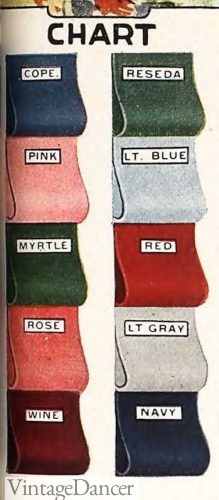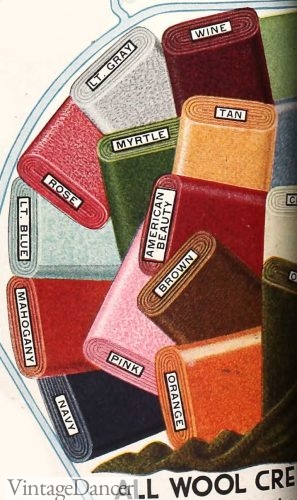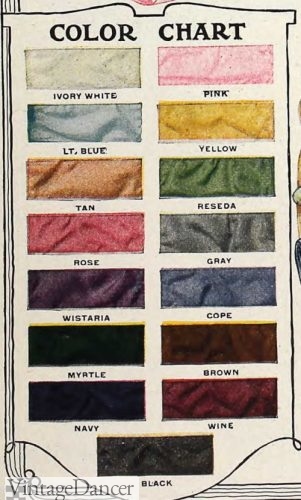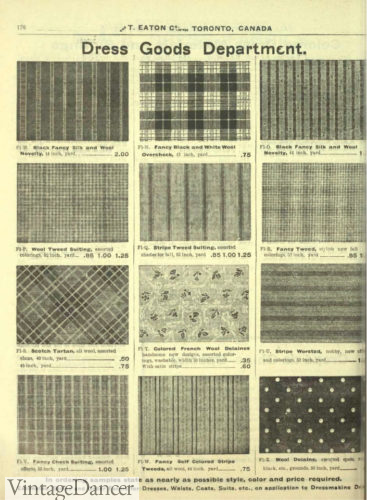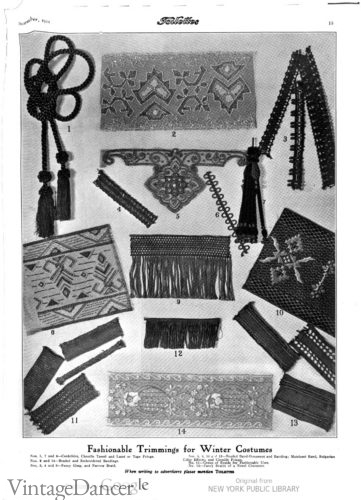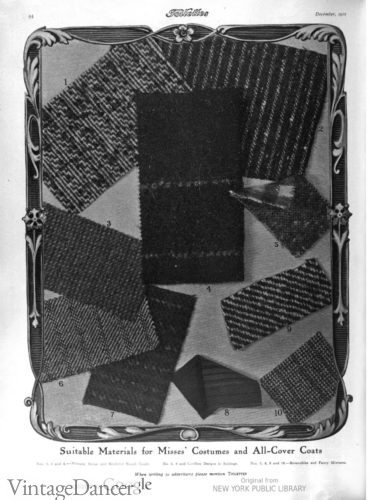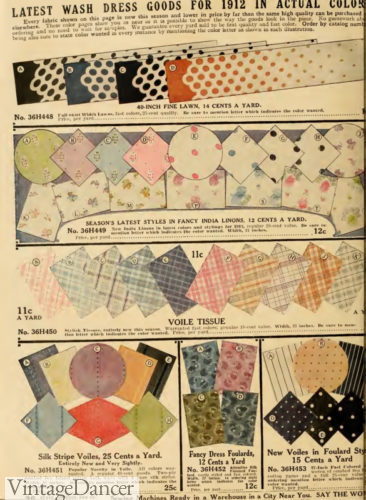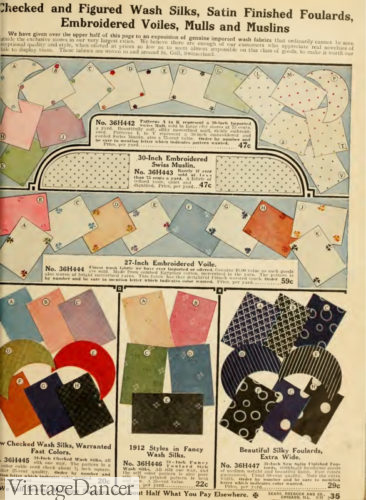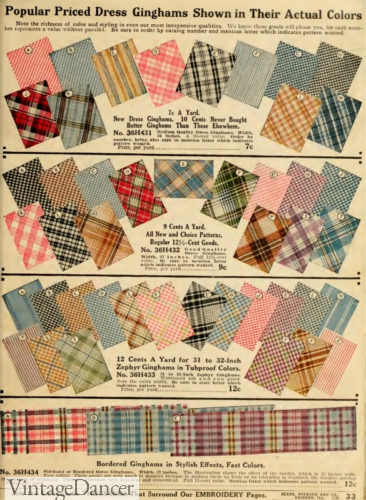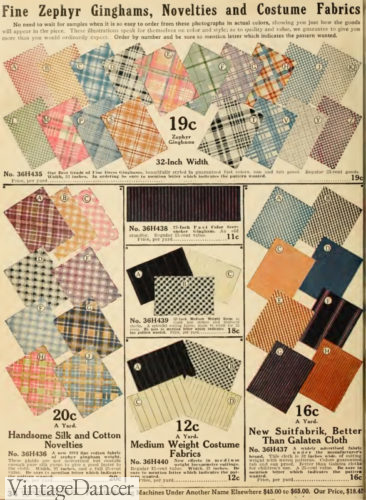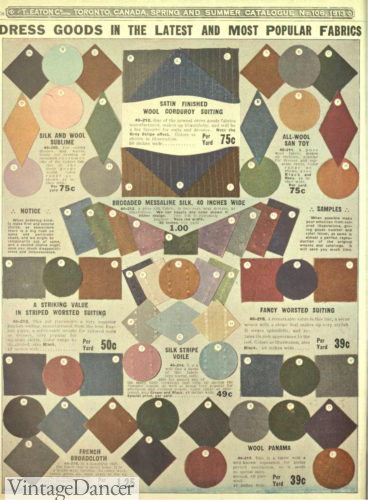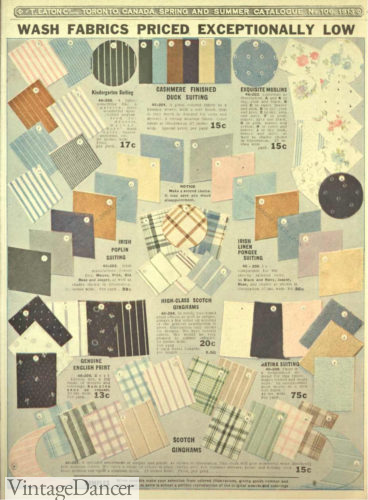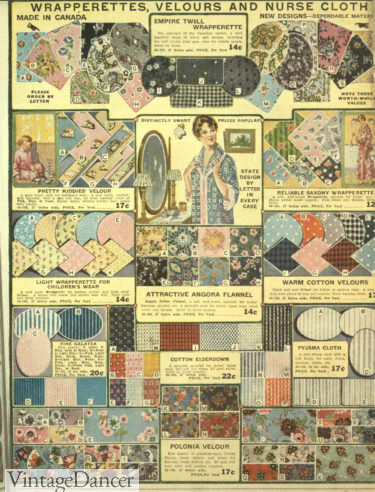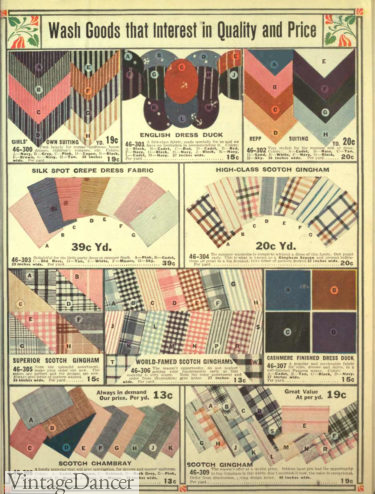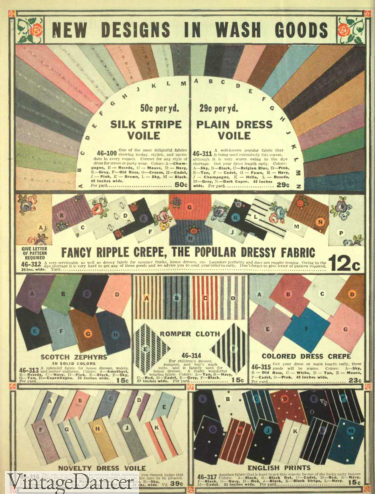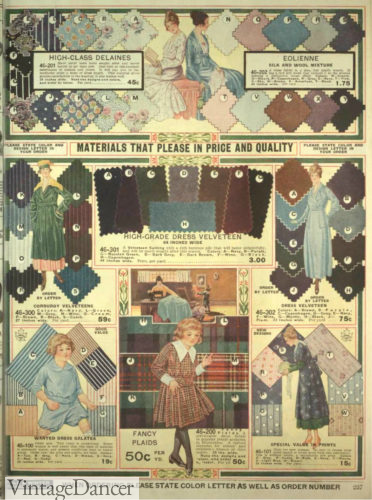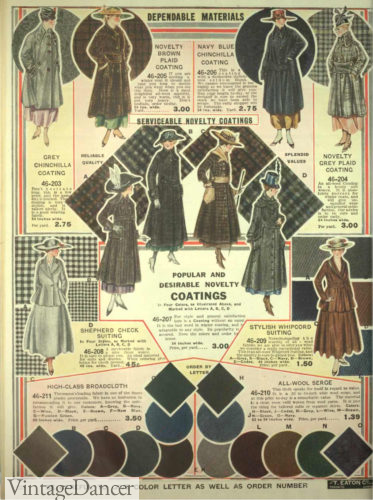When embarking on an Edwardian era sewing project, it is critical to look at fabrics, colors, and textures to re-create the most authentic outfit possible. Prior to 1910, finding color illustrations or swatches of fabrics is very difficult. My collection is growing, but heavily favors the late teens when color printing was more economical.
The following scans are from summer and winter clothing catalogs and tailor’s books spanning 1906 to 1918. The target audience for these books were women home sewers or men ordering suits from a traveling tailor. You won’t find much evening wear in these offerings but plenty of house dresses, day frocks, suitings, and nightgowns as well as fabrics for making children’s clothes.
To shop for Edwardian patterns for women look here, and men here.
Edwardian Fashion Colors
1900s Fashion Colors
Early Edwardian 1900s fashion colors favored cheerful pastels and bright feminine hues. The lady was a delicate flower, sweeping her way across the room in her full skirts and ruffling petticoats. Even her silk stockings were chosen to match her dress.
These Edwardian colors were used for the prettiest of garments: ivory, pastel blue, copenhagen blue, light blue, yellow, pink, rose, turquoise, pale beige, silver-grey, emerald green, and reseda green.
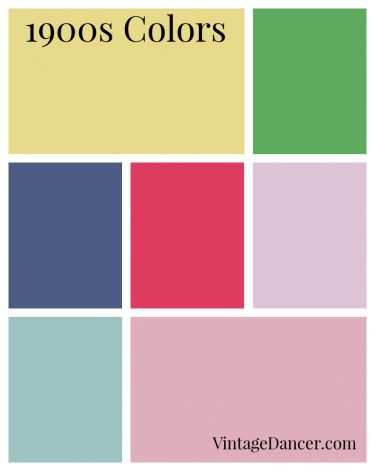
1900s colors for women
More practical colors for suits, coats and skirts were traditional dark colors: battleship grey, brown, black, navy blue, beige, and wine.
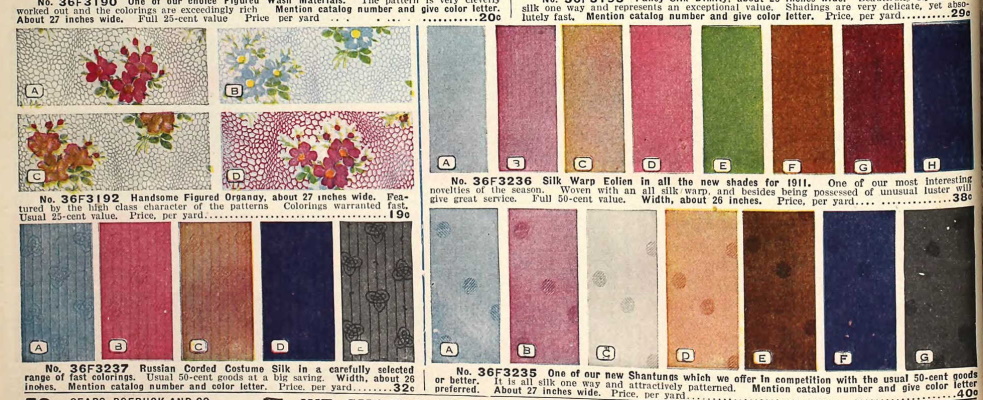
1911 fabrics and colors
In 1907, Ladies Home Journal reported the newest colors were all shades of grey: grey- rose, grey-blue, grey-green in very soft hues taken from the French Art School of the 18th century. They also talked a great deal about purple, deep but soft purple, for winter coats and dresses. Lighter lilac purple and mauve was fashionable for day and evening gowns. Coordinating purple with grey or navy blue trim and accessories was very harmonizing.
Edwardian 1910s Colors
The late Edwardian 1910s moved away from pastels and into jewel tones for day and evenings. Bright red, bright blue, royal purple, rich green, rose pink and old-gold were strong favorites.
Pastel colors for daywear continued to expanded into more variety of shades with deeper and lighter hues.
Popular Edwardian colors were: slate grey, pearl grey, cream, ivory, royal blue, plum, copen blue, navy blue cadet, helio, wisteria, lavender, amethysts, coral, wine, old rose, American beauty (red), mahogany (an orange-red-brown), tango orange, tan, yellow, reseda green, myrtle green, emerald green, nile green and olive green.
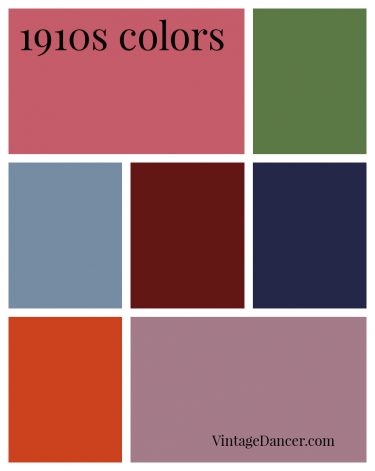
1910s colors for women
Catalogs began to include color charts making it easier for women to order fabrics and clothing without fabric samples.
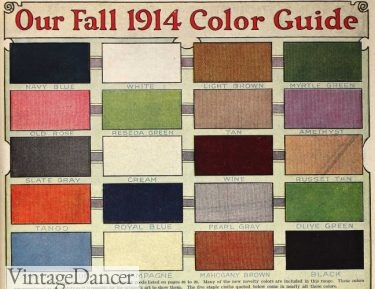
1914 colors
- 1916 spring colors
- 1917 fall fabric colors
- 1917 wool fabric colors
- 1918 silk colors

1917 dark fabric colors for winter, suits, skirts, and menswear.
Women’s Edwardian Fabrics- Dresses, coats, suits, nightwear
House Dresses: Gingham, duck cloth, chambray, percale, serge, poplin, velveteen, satin habutai
Day / Afternoon Dresses: Wool serge, satin, taffeta, silk poplin, messaline, wool jersey, crepe de chine, silk velvet, Venetian broadcloth, linen, chevoit, organdy, muslin, lawn, noisook, brilliantine
Blouses (waists): Lawn, ponge, madras, silk (crepe, taffeta, shantung, georgette, china, japan), velvet, cashmere, wool, mohair, linen, velvet, lustre, cambric. Trims of Brussels net or French net and lace.
Skirts: Panama, satin, voile, wool
Suits: Panama, broadcloth, tweed, Venetians, serge taffeta, wool, vicuna, voile, chevoit, velvet cord, gabardine
Coats: Wool, broadcloth, kersey, chinchilla, beavercloth, tweed, wool velour, covert, silk velveteen, velvet (evening coats)
Nightgowns, robes: Flannel, velour flannelette, twill flannelette, sateen, muslin, white cotton, silk
Aprons: white lawn, gingham, chambray (pink, blue, fawn)
- 1907 silk, wool, tweed, suiting fabrics
- 1911 trim – lace, fringe, tassels
- 1911 wool suiting swatches
- 1912 lawn, linen, voile, foulard
- 1912 silk, satin foulard, embroidered voiles, mulls, and muslins
- 1912 gingham and plaid cottons
- 1912 silk and cotton day fabrics and suiting weight fabrics
- 1913 wool/silk suiting, corderoy, cotton broadcloth
- 1913 gingham, poplin. suiting, linen, muslin, cotton prints
- 1916 corderoy, broadcloth, tweed, delaine, serge coating, chinchilla coating, plaid
- 1916 velour, twill. flannel house dresses, robes, nightgowns, children’s fabrics
- 1916 suiting, duck cloth, silk crepe, gingham, chambray
- 1916 fancy fabrics- voile, crepe, prints
- 1918 delaine, velveteen, corderoy, galatea, plaid, prints
- 1918 coatings and suiting – chinchilla, plaid wool, serge, whipcord, broadcloth
Edwardian Fabric Shops
Reproduction and new fabric shops to look through.
- Fabric.com – An assortment of basic fabrics. Sometimes I find great options here.
- Thai Silks – A huge assortment of silks and silk blends
- Renaissance Fabrics – Historical fabrics and trims
- Maltings Fabrics (UK) – Early 20th-century reproduction fabrics
- eBay – Vintage Sari Fabric, especially with a deco print, is a great option for evening gowns
- Reproduction Fabrics – Mostly heavier cotton/crafting weight fabrics
- Spoon Flower – Vintage reproduction or inspired designs printed on a variety of fabrics
- Liberty Fabrics (UK) – Cotton and lawn printed fabrics. Also silk and linen
- Farm House Fabrics – Cotton, lawn, suiting, silk and more
- Sew La Di Da (UK) – vintage inspired cotton, linen, crepe, etc
- B Back and Sons – Wool, cashmere and silk. Wool suiting ideal for menswear
- Dharma Trading – Dyeable silk, cotton, rayon and linen fabrics
- Burley and Trowbridge– Cotton, wool, silk and linen historical fabrics
- NY Fashion Center – Fashion fabrics, all kinds
- Mood Fabrics – Designer fashion fabrics, all kinds. Trims and leather too
- Fashion Fabrics Club – More fashion fabrics
- Fabric Mart Fabrics – Organized by fabric type
- IKEA – some amazing historical clothing has been made from Ikea’s fabric and curtains
- Farthingale– Corset, garter, petticoat making supplies and some fabric
Move onto 1920s fashion fabrics
Debbie Sessions has been teaching fashion history and helping people dress for vintage themed events since 2009. She has turned a hobby into VintageDancer.com with hundreds of well researched articles and hand picked links to vintage inspired clothing online. She aims to make dressing accurately (or not) an affordable option for all. Oh, and she dances too.

